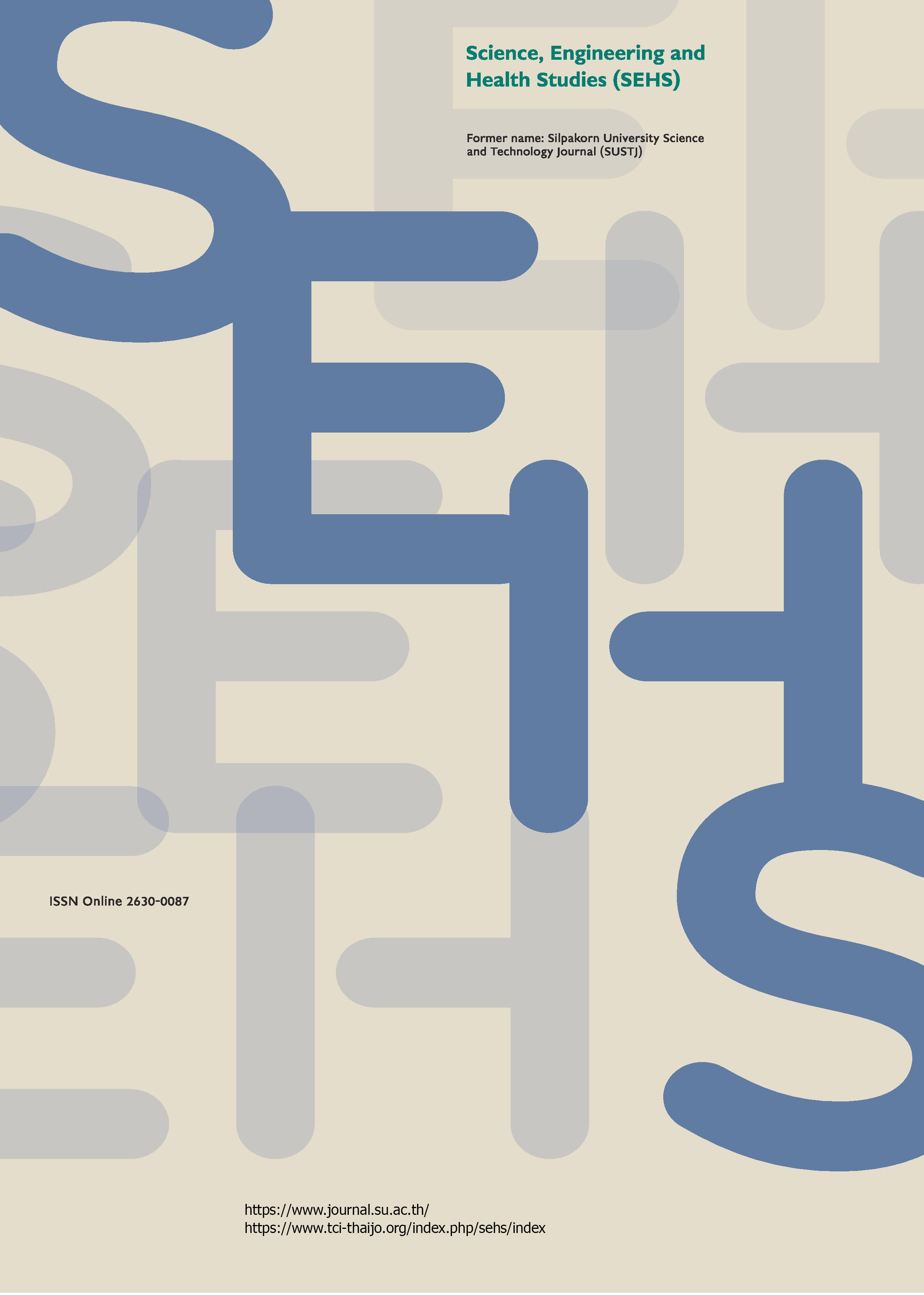Thai weaving pattern classification using convolutional neural networks
Main Article Content
Abstract
The creation of Thai weaving patterns based on reproduction of original patterns with adapted patterns inspired by designer is a way to reserve Thai textiles. Although weaving pattern designs are useful for promoting Thai textiles such as in casual attires, preserving original Thai patterns is still needed. This work aimed to classify the images of original Thai ethnic and adapted weaving patterns. In this paper, we trained 28 original Thai ethnic patterns using the convolutional neural network. We cropped and preprocessed the weaving images to a binary format. The data augmentation method was also used to increase the number of weaving patterns for training the convolutional neural network. The model was tested in the real world by using test patterns from Google images and gave the results of 0.90, 0.92, and 0.90 for precision, recall, and F1 score, respectively.
Downloads
Article Details

This work is licensed under a Creative Commons Attribution-NonCommercial-NoDerivatives 4.0 International License.
References
Anila, S., Rani, K., and Saranya, B. (2018). Fabric texture analysis and weave pattern recognition by intelligent processing. Journal of Telecommunication, Electronic and Computer Engineering, 10(1-13), 121-127.
Ben Salem, Y., and Nasri, S. (2010) Automatic recognition of woven fabrics based on texture and using SVM. Signal, Image and Video Processing, 4, 429-434.
Boonsirisumpun, N., and Puarungroj, W. (2018) Loei fabric weaving pattern recognition using deep neural network. 2018 15th International Joint Conference on Computer Science and Software Engineering, pp. 1-6. Nakhon Pathom, Thailand.
Dittakan, K., and Theera-Ampornpunt, N. (2018). Pum-Riang Thai silk pattern classification using texture analysis. In PRICAI 2018: Trends in Artificial Intelligence. (Geng X., and Kang, B.-H., Eds.), pp. 82-90. Cham: Springer.
Hussain, M. A., Khan, B., Wang, Z., and Ding, S. (2020). Woven fabric pattern recognition and classification based on deep convolutional neural networks. Electronics, 9(6), 1048.
Jing, J., Wang, J., Li, P., and Li, Y. (2011). Automatic classification of woven fabric structure by using learning vector quantization. Procedia Engineering, 15, 5005-5009.
Kang, X., Xu, M., and Jing, J. (2019). Automatic classification of woven fabric structure based on computer vision techniques. Journal of Fiber Bioengineering and Informatics, 8, 69-79.
Khaire, M. (2011). The Indian fashion industry and traditional Indian crafts. Business History Review, 85(2), 345-366.
LeCun, Y., Bottou, L., Bengio, Y., and Haffner, P. (1998). Gradient-based learning applied to document recognition. Proceedings of the IEEE, 86(11), 2278-2324.
Li, Z., Meng, S., Wang, L., Zhang, N., and Gao, W. (2019). Intelligent recognition of the patterns of yarn-dyed fabric based on LSRT images. Journal of Engineered Fibers and Fabrics, 14, 1-13.
Meng, S., Pan, R., Gao, W., Zhou, J., Wang, J., and He, W. (2021). A multi-task and multi-scale convolutional neural network for automatic recognition of woven fabric pattern. Journal of Intelligent Manufacturing, 32(1), 1147-1161.
Mohanty, A. K., and Bag, A. (2017). Detection and classification of fabric defects in textile using image mining and association rule miner. International Journal of Electrical, Electronics and Computers, 2(3), 28-33.
Preechasuk, J., Chaowalit, O, Pensiri, F., and Visutsak, P. (2019). Image analysis of mushroom types classification by convolution neural networks. In Proceedings of the 2019 2nd Artificial Intelligence and Cloud Computing Conference, pp. 82-88. Kobe, Japan.
Puarungroj, W., and Boonsirisumpun, N. (2019). Recognizing hand-woven fabric pattern designs based on deep learning. In Advances in Computer Communication and Computational Sciences. Advances in Intelligent Systems and Computing (Bhatia S. K., Tiwari S., Mishra K. K., and Trivedi M. C., eds.), pp. 325-336. Singapore: Springer.
Sandhu, A. (2015). Indian fashion: Tradition, innovation, style, 1st, London: Bloomsbury Publishing. pp. 1-28.
Summers, C., and Dinneen, M. (2019). Improved mixed-example data augmentation. 2019 IEEE Winter Conference on Applications of Computer Vision, pp. 1262-1270. Waikoloa, HI, USA.
Sutthiwong, A., and Suwannawaj, S. (2016). Design of Teenjok printing for creating contemporary fashion from Thai Phun wisdom, Sukhothai. Art and Architecture Journal, 7(2), 146-158. [in Thai]
Takahashi, R., Matsubara, T., and Uehara, K. (2018). RICAP: Random image cropping and patching data augmentation for deep CNNs. In Proceedings of the 10th Asian Conference on Machine Learning, pp. 786-798. Beijing, China.
The Queen Sirikit Department of Sericulture. (2016). The Royal Thai Silk Conservation Village Project, 1st, Bangkok: Ministry of Agriculture and Cooperatives. pp. 1-24. [in Thai]
Utiswannakul, P. (2016). The traditional textile development in Nan region. Silpakorn University Journal of Social Sciences, Humanities, and Arts, 16(3), 1-18.
Visutsak, P., Nipiyanan, P., Thunyapol, P., Chutragoon, R., Kankanluang, Srisuttivoragul, W., Jangkorn, S., Thathai, N., and Bunyakiat, G. (2021). Data dashboard for Thai weaving pattern image gallery (Research report). Bangkok: King Mongkut's University of Technology North Bangkok. [in Thai]
Yun, S., Han, D., Oh, S. J., Chun, S., Choe, J., and Yoo, Y. (2019). CutMix: Regularization strategy to train strong classifiers with localizable features. In Proceedings of the 2019 IEEE/CVF International Conference on Computer Vision, pp. 6022-6031. Seoul, South Korea.
Zhang, J., Xin, B., and Wu, X. (2013). A Review of fabric identification based on image analysis technology. Textiles and Light Industrial Science and Technology, 2(3), 120-130.
Zhong, Z., Zheng, L., Kang, G., Li, S., and Yang, Y. (2020). Random erasing data augmentation. Proceedings of the AAAI Conference on Artificial Intelligence, (34)7, 13001-13008.


